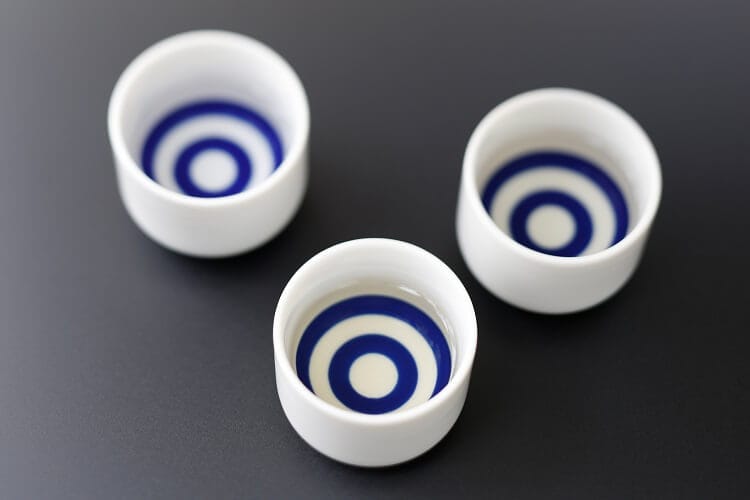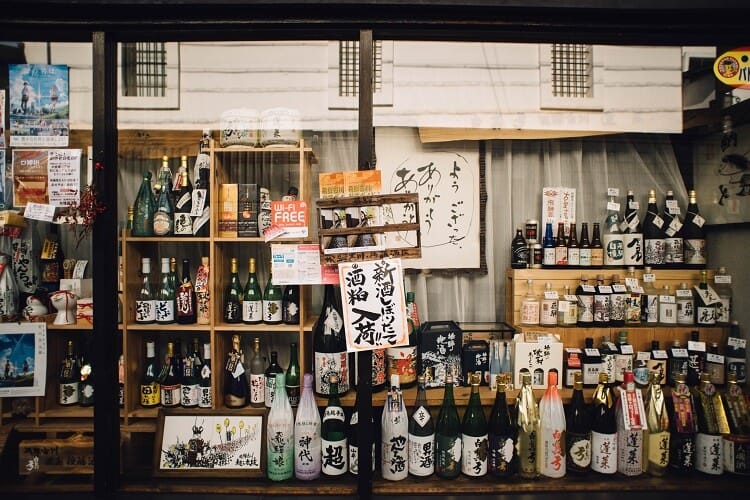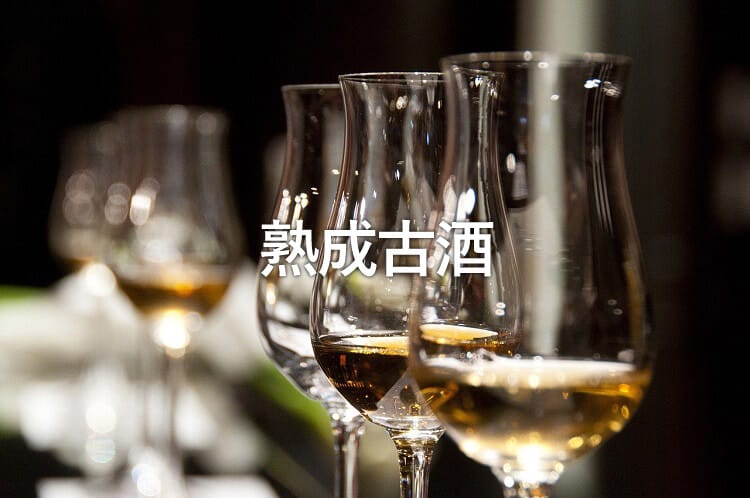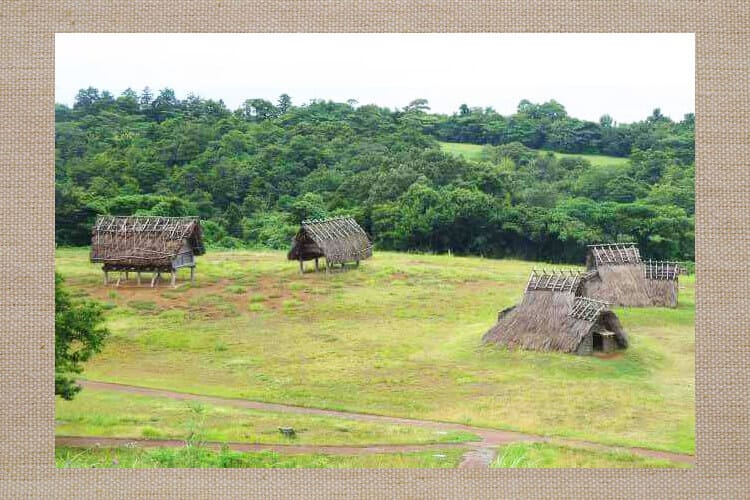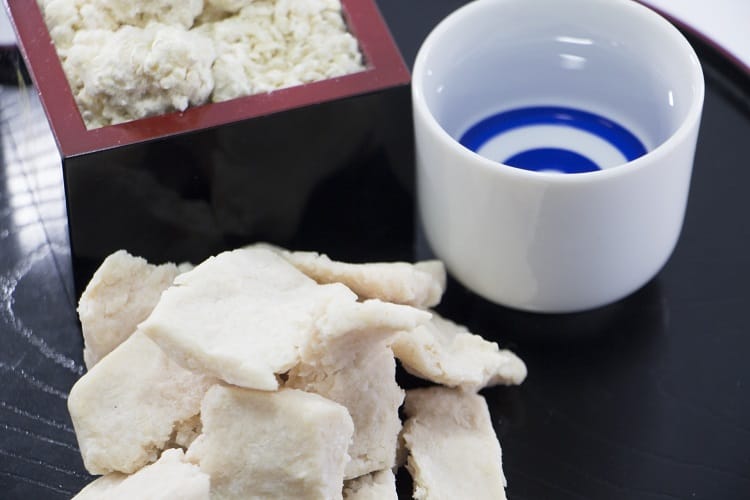
What is sake lees
In the process of making sake, the remaining squeezed mash after the preparation is finished is sake lees. Sake lees leave 25% of the weight of sake rice brewed.
Sake lees are rich in concentrated functional ingredients derived from rice, koji and yeast, making it a very excellent health food.
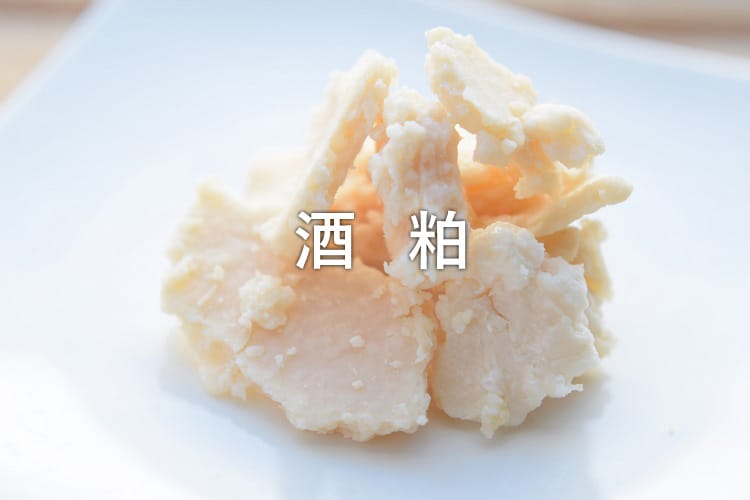
Nutrients and effects in sake lees
・ Beautiful skin effect
B vitamins contained in sake lees increase skin metabolism and promote turnover. It is rich in dietary fiber and eliminates constipation, which can cause rough skin, and can be expected to have a beautiful skin effect. In addition to preventing the growth of melanin pigments, it prevents skin from drying due to its moisturizing effect. In addition, “α-EG” contained in both sake and sake lees promotes collagen production by skin cells, which has been proven to be effective in reducing skin texture.
・ Improve immunity
Components contained in the cell walls of koji mold and yeast have the effect of increasing immunity.
・ Preventive effects of lifestyle-related diseases
Contains components such as plasminogen, which dissolves blood clots, which can be a whale drink for cerebral infarction and arteriosclerosis.
・ Protection of liver
Peptides increase the liver's antioxidant power and remove active oxygen to protect the liver.
・ Elimination of constipation
Insoluble dietary fiber in sake lees helps to remove excess waste from the intestine. Oligosaccharides also promote the growth of good bacteria and regulate the intestinal environment.
・ Relieves stiff shoulders, headaches and coldness
Adenosine, which has a vasodilator effect, relieves symptoms such as stiff shoulders, headaches and coldness.
・ Prevention of diabetes and obesity and improvement of constitution
Indigestible starch contained in sake lees suppresses the absorption of sugar, and the indigestible starch excretes fat and cholesterol ingested in the diet.
・ Improvement of allergy constitution
The peptide contained in sake lees inhibits the activity of cathepsin B, which causes allergic symptoms, and alleviates the symptoms. Alleviation of allergies requires continuous intake.
・ Control of hypertension
Contains multiple peptides that help control hypertension.
・ Prevention of osteoporosis
As we age, an enzyme called capsin L that promotes bone breakdown grows. Sake lees contain functional ingredients that inhibit the action of their enzymes.
・ Reduction of bad cholesterol
Resistant protein absorbs excess fat and residual oil in the intestine and excretes it with stool. Contains functional ingredients that can suppress the production of bad cholesterol and the oxidation of lipids, and return excess cholesterol to the liver.
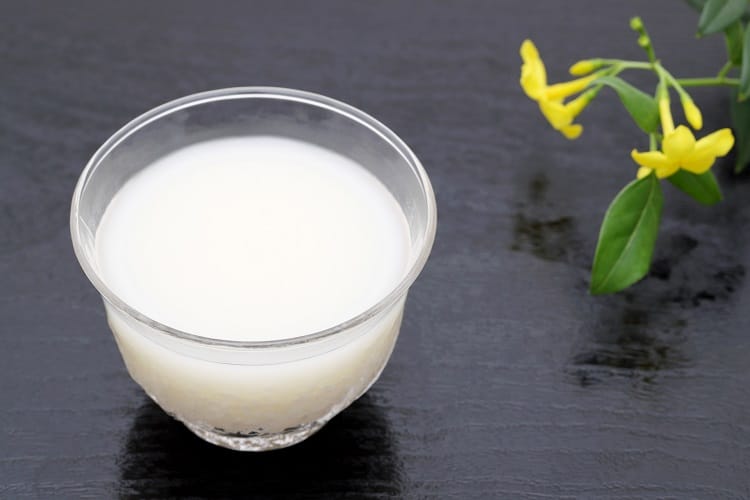
Intestinal activity with sake lees
Sake lees is rich in amino acids and sugars derived from rice, and has the effect of decomposing food ingredients with enzymes to make it delicious. Not only does it taste good, but it's rich in enzymes, vitamins B, and essential amino acids, so nutrients increase. Yeast alcohol and lactic acid lactic acid control germs. In addition, the enzymes contained in sake lees promote digestion and absorption and improve bowel movements. It lowers bad cholesterol levels and improves blood flow. By improving bowel movements, the intestinal environment is improved, leading to improved skin quality. The intestine and the skin are closely connected, and the intestine is an extension of the skin. The reason is that when a person faces up and stands with his mouth open, it is a cylindrical object, so the intestine can be described as the inner skin. Looking at the correlation between the intestine and the skin in this way, you can clearly see that all intestinal conditions also appear on the outer skin. In recent years, adjusting the intestinal environment is called "intestinal activity" and has attracted attention from women with a high sense of aesthetics. It is two sides of the same story.
Although sake lees has many effects on beauty and health in this way, one of its typical uses is the topical amazake. Amazake is characterized by the unique flavor of sake lees and a crisp mouthfeel, allowing you to directly enjoy the taste of sake lees itself. However, for those who do not like the unique flavor, a surprisingly diverse variety of sake lees has been devised. This time, I will introduce various recipes full of surprises that you will want to try.
Sake lees sweets
Crispy sake lees cracker characterized by a rich body and a slight sweetness
https://www.instagram.com/p/BU3pZbrFAve/?utm_source=ig_web_copy_link
<Material>
・ Flour 100g
・ Okara 50g
・ 1-2 tablespoons of salad oil
・ 1/2 teaspoon salt
・ Sake lees 50g
<How to make>
① Mix all ingredients.
② Use a cotton swab to stretch it thinly and cut it to your desired size with a kitchen knife.
③ Bake in a 160 degree oven for about 20 minutes and cool in the oven to complete.
*point
・ Adjust the amount of salad oil as much as the dough is united.
・ Sake lees are easy to burn, so bake slowly and cool at low temperatures.
・ Store stocks in the freezer.
Sake lees pound cake with richness like cheese
<Material>
・ Hot cake mix 100g
・ One egg
・ Olive oil 50cc
・ 40g sugar
・ A little teaspoon of salt
・ Sake lees 50g
<How to make>
① Put all ingredients in a bowl and mix well.
②Pour into a pound cake mold and bake in a 180 degree oven for 35 minutes to complete
*point
・ As the aroma of sake lees remains a little, please adjust the amount of sake lees to your liking.
・ Sake lees are easy to burn, so you can adjust the baking condition by baking with aluminum foil on the way.
・ If you wrap the freshly baked food in the wrap and eat it the next day, you will get a moist texture.
Sake lees scone
https://www.instagram.com/p/BiBaDzsH5ST/?utm_source=ig_web_copy_link
Approx. 20
A
・ Soft flour 200g
・ Strong flour 200g
・ 2 teaspoons of baking powder
・ 100g of chilled unsalted butter
・ Half a teaspoon of salt
・ XNUMX tablespoons of cane sugar
B
・ Eggs (1 LL) 70g
・ 100g yogurt
・ Soy milk 20g
・ Sake lees (loose) 150g
(XNUMX) Put all ingredients in A into a food processor and mix.
② Put all ingredients of B into a bowl and mix well. Add to ② and mix gently until it is united.
Be careful not to stick or stick too much.
③ Form the dough into a square, cover it with wrap and let it rest for one hour in the refrigerator. Fold in eight layers on the way.
伸 Extend the dough to a thickness of about 200cm, remove it with a mold, arrange on a baking sheet, and bake at 12 ° C for XNUMX minutes.
*point
Freshly baked sake cake has a strong taste, so it is recommended for those who like the taste of sake cake
If you don't like the flavor of sake lees, you can cool down the flavor of sake lees and enjoy the crispy texture and rich flavor.
Please adjust the amount of sake lees to your liking.
The moisturizing ingredient of sake lees keeps moist and delicious the next day.
Just mix and bake, rich cheese-like cake of rum raisins and sake lees
https://www.instagram.com/p/By4LZsOg-Hk/?utm_source=ig_web_copy_link
<Material>
・ Sake lees 80g
・ 100 g of drained yogurt
・ 45g sugar
・ Soy milk 80cc
・ 3 tablespoons soft flour
・ Rum raisins your preferred amount
・ 1 tablespoon lemon juice
<How to make>
① Put all ingredients in a bowl and mix well.
② Bake in the oven at 190 degrees for 30 minutes.
*point
-If you are not good at sweets or want to reduce sugar, increase the amount of rum raisin for a natural sweet finish.
Sake lees x spices
Food coordinator who develops recipes to eat delicious and healthy. From the recipe of Mr. Murai apple, we will introduce a recipe that brings out the unique charm of sake lees by combining the unique flavor of sake lees with the flavor of spices.
Sake lees and curry powder fried chicken
<Material>
・ 8 chicken wings
・ 200-250g of dough
A
・ Grated garlic 1/2 tbsp
・ XNUMX tablespoon curry powder
・ Sugar, salt 1 teaspoon each
・ Salt and pepper a little
・ Appropriate amount of frying oil
<How to make>
① Put kneaded lees and A in a sealed storage bag and mix to make a "spice lees floor." Add salt, pepper chicken wings and stir with hands.
② Let them sleep for 3 to XNUMX days in the refrigerator.
③ Remove chicken wings from sealed storage bag. The sake lees on the meat are wiped lightly by hand without rinsing, and dusted with potato starch evenly.
④ [Pass the heat] Heat the frying oil in a frying pan, add ③ from a low temperature and start frying. When the edge of the chicken wings turns golden, raise the temperature and fry for 3-4 minutes.
*point
・ If you fry the sake lees on chicken without washing them off, you will get a crisp and crispy texture.
・ Knead lees are sake lees kneaded into a soft paste.
Ethnic lamb chops
The effect of sake lees removes the smell of lamb and makes it soft and juicy.
<Material>
・ 6 lamb chops
・ Narikasu 200-250g
A
・ XNUMX tablespoon ginger
・ 1 tsp salt
・ XNUMX tablespoon cumin powder
・ Salt, pepper, salad oil
<How to make>
① Put kneaded lees and A in a sealed storage bag and mix to make a "spice lees floor." Add salt and pepper lamb and pour it in with your hands.
② Let it sleep for 1 to 3 days in the refrigerator.
③ Take out the lamb, rinse off the sake lees, and wipe off the moisture. Heat the salad oil in a frying pan, cover and bake over low heat. After baking for about XNUMX minutes on one side, remove the lid, turn it on high heat, and bake both sides. On the way, the fat oozes out of the meat, so wipe it off with cooking paper.
*point
・ If you squeeze the lemon, it will be refreshing and delicious.
Sake lees fruit gratin
<Material>
・ One banana
・ 80g of dough
・ 1/4 teaspoon of cinnamon
・ A little granulated sugar
<How to make>
Spread the dough on wrap, peel, wrap with bananas covered with cinnamon, and let refrigerate for one day. Remove the wrap, put in a heat-resistant container with sake lees on, and shake the granulated sugar. Bake in the oven toaster until the granulated sugar burns into a caramel.
*point
・ If you bake plenty of granulated sugar, the surface will be caramelized, making it a more delicious dessert with a crisp texture.
Dried fruit sake lees ball that can be eaten together with kneaded lees
<Material>
・ 2 prunes
・ 2 dried persimmons
・ 1/4 teaspoon of cinnamon
・ 100 g of kneaded lees
<How to make>
Spread the dough on the wrap, wrap it with cinnamon-coated prunes and dried persimmons and wrap in the refrigerator for one day.
*point
-If the dough is washed off and chopped, it can be used as a confectionery ingredient like rum raisins.
If you are busy and can't cook easily even if you know it's good for beauty and health, various products are available on the market.
For example, a product that uses sake lees from Yamasake sake, “Dassai”, uses sake lees made by centrifugation of Junmai Daiginjo sake ice cream, ice candy, and a low alcohol content of 2% alcohol. There is a light-tasting sake lees cake that contains.
How to use sake lees other than cooking
In addition, sake lees, which are rich in vitamins and minerals, can be used for cosmetic effects other than eating. However, when using it directly on the skin, it is necessary to make sure that the skin is okay by performing a patch test on the back of the hand beforehand.
Sake lees bath
Wrap the sake lees in gauze and put it in the laundry net. Put it in the bath. A luxurious mood, such as a milky color and fragrance, near the softened hot water, enhances the relaxing effect. However, since alcohol content is contained, the first hot water containing sake lees should be taken by an adult. The sake lees component keeps the body after bathing warm from the core. Especially recommended when you feel cold in winter or cooler. In addition, whitening can be expected due to the effect of the contained koji.
Sake lees pack
If you have strong skin, we also recommend a whitening pack that applies paste made from sake lees to honey and water on your face. Sake lees paste made only from ingredients that are safe to eat is delicious, safe and secure even if it gets into your mouth.
The material of sake lees pack is 100 g of pure rice sake lees, 100-150 ml of purified water, and honey in suitable amount. Pour sake lees into a bowl or glass container and add it gradually while adding purified water. Adjust the amount of purified water while checking the hardness. It is completed when it becomes a paste that is hard enough not to drip on your face. Sake cake is hard to dissolve if it is too hard, so take it out of the refrigerator, split it into smaller pieces and extend it to shorten the time. For sake lees, use “junmai sake lees” that does not contain additives. Care must be exercised for those containing additives such as antioxidants and seasonings, and sake lees containing brewed alcohol, which are highly irritating to the skin.
Apply the sake lees pack to the face and body, leave it for about 5 to 10 minutes, and then rinse with lukewarm water. After the sake lees pack, you will feel that the skin surface is moist and moist. Sake lees packs can be stored refrigerated, but should be used up within a week. In summer, it has a refreshing effect with a cool and pleasant sensation.
Packing in a humid bath opens pores and makes it easier for the beauty ingredients of sake lees to penetrate. We can expect effect to remove dirt clogged up in pore. If you are not good at the smell of sake lees, adding your favorite aroma oil will enhance the relaxing effect. In that case, you need to use an aroma oil that matches your skin type, and be careful not to add too much. In addition, adding rice bran gives a moderate roughness, so you can expect a scrub effect. Unless you are confident in your skin's strength, we recommend using it on your body rather than your face. In particular, massage on elbows, knees, heels and other horny areas of concern. If you have weak skin, be careful not to rub too much and just spread it on your skin.
How to choose sake lees
How to identify sake lees
In order to expect the umami of sake lees and higher beauty and health benefits, sake lees of low-grade rice (near brown rice) and pure rice sake ("Brewer alcohol" is not listed on the raw material label) would be better. . In addition, the raw or yamahai preparation is rich in lactic acid bacteria and yeast.
Raw (Kimoto) making is a method of making sake mothers by hand. In the process of making sake, there is "Sake Making". Sake mother is made by adding koji, yeast, and lactic acid bacteria to steamed rice and water, and is the source of sake fermentation by culturing the yeast. This sake mother is the base of "Moromi", the prototype of sake.
Sake mothers are like aggregates of yeast that convert sugar into alcohol, but together with yeast, the important thing is the presence of lactic acid bacteria. Lactic acid produced from lactic acid bacteria plays a role in killing germs unnecessary for sake.
In normal sake making, lactic acid uses artificial ones, but in raw (kimoto) making, lactic acid is also made by hand. A sake brewery made with artificial lactic acid is called "Hayajyo (Sokujomoto)", and a sake brewery made with natural lactic acid is called "Kimoto".
Nowadays, lactic acid is made artificially, but when there was no refined lactic acid, lactic acid was also handmade. Lactic acid bacteria naturally growing in the air, on the walls of the warehouse, and on the ceiling were bred and used for sake brewing.
It takes time to culture lactic acid bacteria from scratch, and in the case of quick brewing (sokujomoto), sake brewing can be completed in about two weeks, while production (kimoto) takes about one month. Kimoto is a traditional sake brewing method that takes time and effort.
Raw rice (Kimoto) grinds rice and rice koji and makes it liquid to wait for the propagation of lactic acid bacteria. This process of grinding rice and rice koji is called “Yama wholesale”. Yamahai brewing refers to a method of producing sake by culturing lactic acid bacteria without wholesale. The important thing in the mountain wholesale process is to melt the rice, but due to technological innovation and research, rice can be melted by the power of enzymes that have melted out of the koji without having to wholesale in the late Meiji era. I understand.
https://www.instagram.com/p/BuBTNyig_Iq/?utm_source=ig_web_copy_link
Mountain wholesale is a heavy labor in which winter rice must be stirred and mashed many times a day from late night to early morning. In addition, because skilled skills are required, not everyone can do it. You can see that the enzyme dissolves rice without having to do mountain wholesale, and "mounting waste" has been adopted as one of the manufacturing methods.
On the other hand, high-refined sake lees (less than XNUMX% refined ... Ginjo-based) sake lees are rich in taste and aroma and fruity, so it can be said that sake lees are familiar as a favorite product.
There are few nutrients and microorganisms contained in sake lees, so you can not expect beauty and health effects compared to low-polished sake lees, but if you are looking for sake lees as a luxury item, refined sake lees (whitening degree XNUMX to XNUMX%) It has a gorgeous scent, sweetness and fruity characteristics.
History of sake lees
Sake lees have a long history like sake. A description of sake brewing using rice koji, the prototype of sake, is found in Harima Kuni Fudoki (713), and Miyanaka in Engi Shiki (905-927) during the Heian period. The brewing method in is described in detail. Sake lees, a by-product of sake brewing, were used as pickles for long-term storage of vegetables and fish. It is thought that sake lees at that time was a sediment that accumulated at the bottom of cloudy sake. In the Heian period, "Uzen Zenji (Uchino Kashiwa no Tsukasa)" (the emperor's and noble culinary turn) states that he used thick sake and its lees with a rich sweet taste for cooking. . In the Edo era, sake lees, which are called “hand-hand sake” and “sake bones” and are rich in nutrients and warm in the winter, were popular with the general public.
There are really many types of sake lees.
Types of sake lees
Itakasu
In general, what you might think of as sake lees is the white plate lees. The solids that remain after the fermented moromi is squeezed and separated from sake. If you bake it and sprinkle with sugar as well as kasu juice and amazake, it will be a simple warm sweet.
Rose cake
Sake lees that could not be formed into a plate. In the case where it cannot be taken in time and manually, the sake lees of Daiginjo and Ginjo sake are made by fermenting rice at low temperature and the rice grains often do not melt. In addition, a lot of sake components remain, and it may be too soft to form a plate. It is called Kogasu by locals.
Dough cake
Sake lees kneaded into a soft paste.
Stepping meal (fumikomikasu)
It is returned to the sake brewing tank, stepped out of the air and aged for 4-6 months. The color is brown or golden, and it is mainly used for pickling vinegar, pickles and fish meat. Depending on the region, it is also called "pressed lees", "morohakusuka", and "kneaded lees".
Molded lees
It is made by kneading rose cake, extruding it into a stick shape, and making it into plate cake shape. In recent years, breweries have become unable to take board meals due to opportunities and labor shortages. It is easy to use because it is kneaded, but the rice koji is broken by sleeping and lacks flavor because it is oxidized. It has a strong meaning as a substitute for itakame.
Summary
Sake lees that have been popular with sake since ancient times. Sake cakes with high nutritional value and taste have been incorporated into regional unique dishes and built a rich sake cake culture. From traditional dishes to eclectic arrangements using sweets and spices, why not try a sake lees that you can easily and versatilely use, and live a delicious and healthy sake lees?
References and reference sites
- Hiroshima UniversityResearch results on health care function of sake lees and plant lactic acid bacteria'
- Japan Brewery Association "Brewery Ingredients"
- Yagaki Fermentation Technology Co., Ltd.Ingredients of sake lees that contribute to health and beauty'
- Laurel Wreath Research InstituteWhat is sake lees resistant protein?'
- Morinaga & Co., Ltd.Amazake Lab.'
- Nagaoka UniversityLet's enliven Nagaoka with sake lees!'



